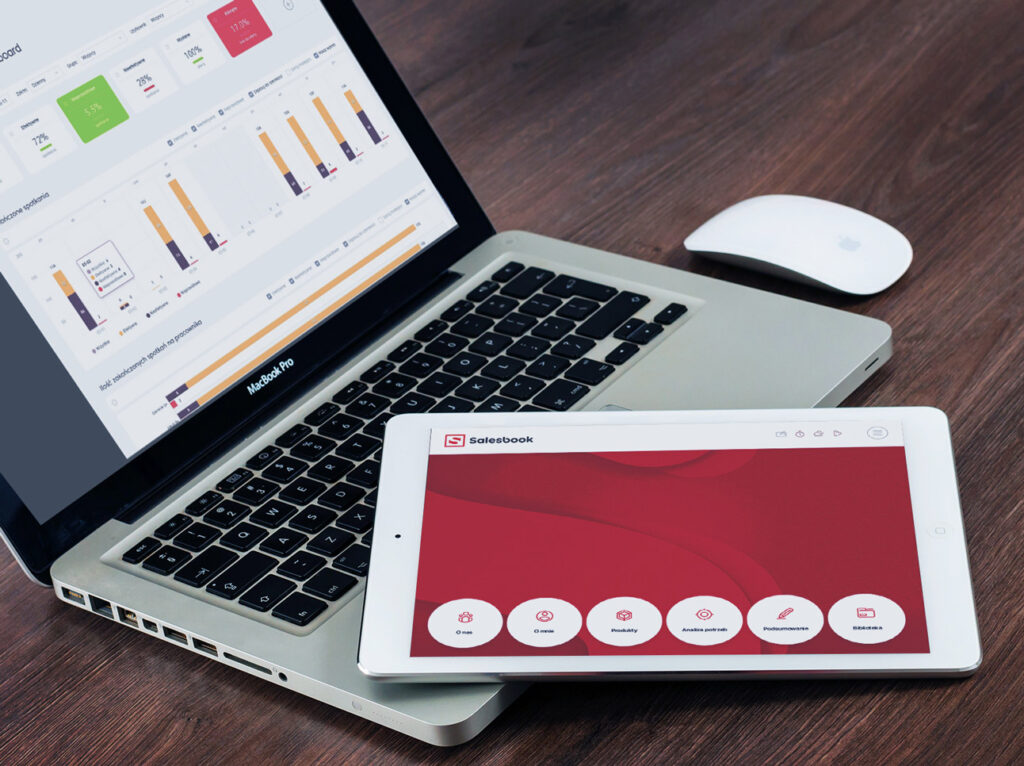What is Sales Acceleration and how it helps managers to achieve sales results

I don’t know any sales department, which wouldn’t have more and more tight targets every year. Did you make a result of 1 million? This year you must make at least 1.3 million. Of course, it’s good to be ambitious, optimize and improve the process, look for opportunities where they previously seemed to us to be negligible. But do you happen to stand in front of a wall sometimes? Luckily, the solution to those problems are Sales Acceleration tools, which are storming the recognition of sales directors around the world. In this article I’ll explain what they are and how they help managers achieve their sales targets.
When you expect a change, but don’t change anything
It is standard in many companies to base on their once acquired knowledge and experience. We believe that something that has worked in the past and brought us success should also work this time. Yes, it’s not a bad tactic – that’s why we hire experienced directors to bring experience to our company and avoid mistakes we can’t afford.
In most cases, it goes well in the first few years – we organize the process, hire salespeople and develop leaflets for them with the marketing department. The salesman also receives a phone, a laptop and access to CRM, as part of which he reports on the progress of work. We let the salespeople out into the world, sending them to conferences, we organize lead databases, hoping for a quick “call” and look forward to the results.
While at the beginning we always have some effects, after a while the dynamics of our sales usually drop and the search for a problem begins. There are many candidates to blame – I think we all know the list of the most common excuses:
- bad salesmen – they don’t spend enough time with their customers, too much work organization,
- bad marketing – he prepared ugly leaflets for us, and at the stand during the fair the competitors had cotton candy and we only had pens,
- bad market – customers don’t understand our great products and are satisfied with substitutes from the competition,
- wrong product – everything would be OK if the product manager listened to us and implemented our comments,
- bad price – we’d certainly sell if the product was 30% cheaper.
Although the above list is a bit mocking, believe me, it is very realistic and applies to most sales departments. The answer to the problems defined in it is the panicky movements of the sales director, who starts to exchange salespeople, print new leaflets and, in extreme cases, use significant discounts. We still hold on to the belief that it used to work, so now it will work too.
Of course, each of these arguments can be very true, and it is up to the management of the company to ensure that the sales director receives the right support. But there is also something he can do himself.
Sales Acceleration as a change
If a sales director wants to make a difference in the work organization of a sales department, he must have three things on hand:
- a set of information about the market, the product and the sales process itself,
- the tools that will allow him to gather this knowledge,
- tools that will change the way we reach and talk to our customers.
All three needs are met by Sales Acceleration applications. Sales Acceleration refers to strategies that help companies move sales opportunities “through the funnel” with greater efficiency than traditional CRM systems. This category includes many tools that support traditional processes, e.g. presentation applications, analytical systems or predictive mechanisms.
In other words, it turns out that all the traditional sales methods we know – from the first meeting to the contract signed – can be supported by additional applications. Of course, this may be one powerful tool, but it may also be a whole set of add-ons that will help us close sales faster. Now the sales director and his team don’t just have to rely on the flyer, phone and declarative CRM data – they can open to a whole range of IT improvements that:
- provide them with reliable market, product and customer data,
- will allow for better adjustment of the offer to the real needs of customers,
- speed up the bidding and contracting processes,
- will allow for advanced after-sales analytics.
Below is a table where I list tool groups from the Sales Acceleration category with their typical applications.
| Tool type | Functional range |
| Presentation tools | They help salespeople to better present their full range of products and services – in addition to traditional presentations, configurators play a special role here. |
| Coaching tools | They help managers to influence the sales activities of representatives in real time to help them achieve their goals. |
| Price configurators | They help to present the total price of the product. |
| E-mails automation | They help with repetitive communication, tracking correspondence and used content. |
| Inbound Call Tracking | They help you discover which marketing campaigns give the most valuable inbound calls and display context data about potential customers during calls. |
| Leads categorization | They help representatives to increase revenue, allowing them to reach the most ready-to-sell potential customers. |
| Predictive Analysis | They help to use data, machine learning and modelling to predict future sales opportunities. |
| Sales Content Management | They help to provide contextualized relevant content to sales reps at every stage of the sales process. |
| Process Automation | They help to automate manual and administrative actions of sales reps to give them more time to sell. |
| Sales gamification | They help to apply game mechanics to sales teams’ operations in the hope of improving overall team performance through internal competition. |
Sales Director 2.0
There are many tools and it is not difficult to notice that including the Sales Acceleration category in the sales process changes the role of the owner of such process. Here we move away from the role of a typical supervisor and consider the context of real help for the entire sales department.
Thus, the Sales Director, on the one hand, becomes a driver of changes that improve the capabilities of salespeople, and on the other hand, he receives tools that allow him to bend over the feedback from the new systems. The latter make it possible for his decisions to be based on real data.
From now on, the following information appears in the hands of the manager on a continuous basis:
- which marketing materials are effective, and which are not,
- how much time traders spend on issues of the offer,
- how much time salespeople spend with customers,
- how many meetings ended up acting, e.g. by sending an offer or opening an e-mail,
- which aspects of price play a key role in the customer’s decision-making process,
- how quickly salespeople answer questions from customers,
- which traders are effective and what elements of the offer they use to close the sale,
- and many, many other issues that may be relevant to sales.
I think any sales director would be much more effective with this information, but on the other hand, everyone also fears that implementing Sales Acceleration is probably months of hard integration work. Well, no. Most of the tools of this type work in the form of a service (Software as a Service), so we do not have a lot of work related to the installation and initial configuration. What’s more, these applications have an API, thanks to which they can integrate with already existing systems in the company, such as CRM or ERP. In this way, Sales Acceleration becomes an addition to the traditional model – an improvement, not a replacement.
Sales Acceleration tools market
The global Sales Acceleration market is estimated to be worth about USD 30 billion and the growth rate is over 16%. Is anyone surprised? I’m not – it’s already a huge business branch that drives sales in leading companies around the world, and the number of tools available in this market is estimated at several thousand. Apart from many smaller companies, this category is also of interest to large companies, such as Salesforce or SAP.
By the way, it is worth noting that the Sales Acceleration market more and more often accommodates solutions related to Machine Learning. This means that these systems can independently analyze data from the entire sales process and on their basis suggest recommended actions, e.g. geographical optimization of sales areas or the use of specific elements of the offer during a meeting with the customer. This makes the management decisions more and more adjusted to market realities and less susceptible to mistakes made by someone else’s misjudgment.
In conclusion, Sales Acceleration tools should be adopted by all Sales Directors worldwide today. Of course, some will not do so, but they will be lagging and will be replaced sooner rather than later by Directors 2.0.
PS. If you want to try out a Sales Acceleration tool in your company, use this form: test the demo. Salesbook is the first application of this type on the Polish market – it already effectively helps salespeople in companies such as Fortum, Energa or Polaris.
Table of Contents







